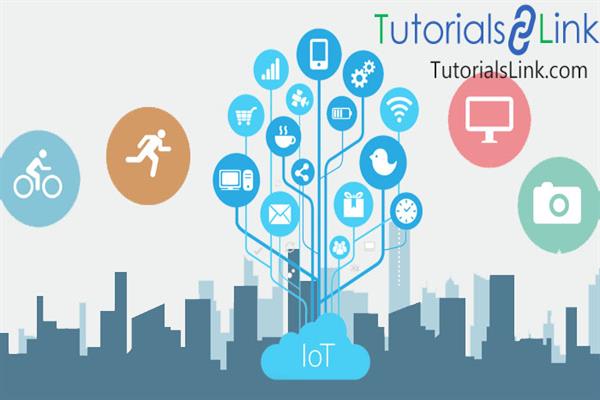Smart Connectivity: How Technology is Powering the Future of Sustainable Industries
The modern world thrives on connectivity. From smart homes and wearable devices to industrial automation and intelligent cities, technology has transformed the way we interact with our environment. The ongoing digital revolution is defined by how effectively machines, software, and data can communicate with each other. This interconnected ecosystem, powered by the Internet of Things (IoT) and advanced embedded systems, is shaping industries that were once seen as purely mechanical or manual.
Across sectors like manufacturing, healthcare, and agriculture, connected devices are driving efficiency, reducing waste, and enabling smarter decision-making. As the line between the digital and physical worlds continues to blur, technology is becoming the backbone of sustainable innovation.
The Era of Smart Automation
Automation has moved beyond the factory floor—it now defines entire systems. Smart automation combines robotics, sensors, and artificial intelligence to create environments that operate with minimal human intervention. From self-checkout systems in retail to autonomous drones in logistics, automation has made operations faster and more precise.
Agriculture’s Digital Transformation
One of the most significant examples of technology-driven change can be found in agriculture. Traditionally dependent on manual labor and environmental luck, farming is now becoming data-driven and sustainable through smart connectivity. Technologies such as drones, soil sensors, and automated irrigation systems are enabling precision agriculture, which focuses on using resources efficiently to maximize yield and reduce waste.
A critical part of this transformation comes from IoT devices in agriculture, which collect and transmit data about soil conditions, temperature, humidity, and crop health. These devices allow farmers to monitor their fields in real time and make data-backed decisions about watering, fertilization, and harvesting. The result is improved crop quality, reduced water usage, and increased sustainability—all made possible by the seamless integration of hardware, software, and connectivity.
The Role of Artificial Intelligence in Connected Systems
Artificial Intelligence (AI) acts as the brain of the connected ecosystem. By analyzing large amounts of data collected by IoT devices and sensors, AI algorithms can identify patterns, predict outcomes, and optimize performance. For example, in manufacturing, AI-driven predictive maintenance systems can detect machine issues before they cause downtime. In healthcare, AI monitors patient vitals and predicts potential health risks, allowing for early intervention.
The combination of AI and IoT not only increases efficiency but also unlocks opportunities for automation and personalization. Whether it’s recommending irrigation schedules for farmers or adjusting energy use in smart homes, AI ensures that connected systems evolve to meet specific needs.
Embedded development ensures that technology remains scalable and secure, forming the invisible foundation of modern innovation.
Connectivity and the Internet of Things
The Internet of Things (IoT) connects billions of devices around the world, creating a digital ecosystem that operates continuously. Each device—from a simple thermostat to a robotic arm—shares data that enables greater control and insight. In industrial settings, IoT systems optimize production lines and track assets. In homes, they help manage energy consumption and improve convenience.
This constant flow of data leads to smarter environments that anticipate human needs and environmental conditions. However, managing this level of connectivity requires robust cybersecurity and data management frameworks to ensure privacy and reliability. As 5G and edge computing expand, IoT’s potential will grow even further, unlocking new frontiers in automation, healthcare, and sustainability.
Sustainability Through Smart Technology
Sustainability is now a key priority for businesses and governments worldwide. Technology offers a path to balance productivity with environmental responsibility. Smart grids, renewable energy monitoring systems, and intelligent waste management platforms all contribute to reducing humanity’s ecological footprint.
In agriculture, smart irrigation systems powered by IoT sensors help save millions of gallons of water each year. In cities, connected infrastructure monitors air quality, traffic patterns, and energy usage, making urban living more efficient and sustainable. By combining IoT, AI, and embedded computing, we are building a future where technology supports—not strains—the planet’s resources.
Embedded Systems: The Core of Technological Intelligence
While AI and IoT dominate discussions around smart technology, the real intelligence begins at the hardware level—with embedded systems. These small yet powerful processors control how devices sense, compute, and communicate. They are found in everything from wearable fitness trackers to industrial robots.
Companies providing embedded development services design and program these systems to operate with precision, reliability, and low energy consumption. These services are essential for integrating sensors, microcontrollers, and software into compact, efficient devices. Without embedded systems, technologies like autonomous vehicles, medical monitors, and smart appliances would not be able to perform real-time operations.
Conclusion
The convergence of connectivity, intelligence, and automation is transforming every aspect of human life. From smart factories to connected farms, technology is unlocking new levels of efficiency and sustainability.
As industries continue to evolve, one truth remains constant: the future belongs to those who can harness technology not just for efficiency, but for a sustainable and connected world.





